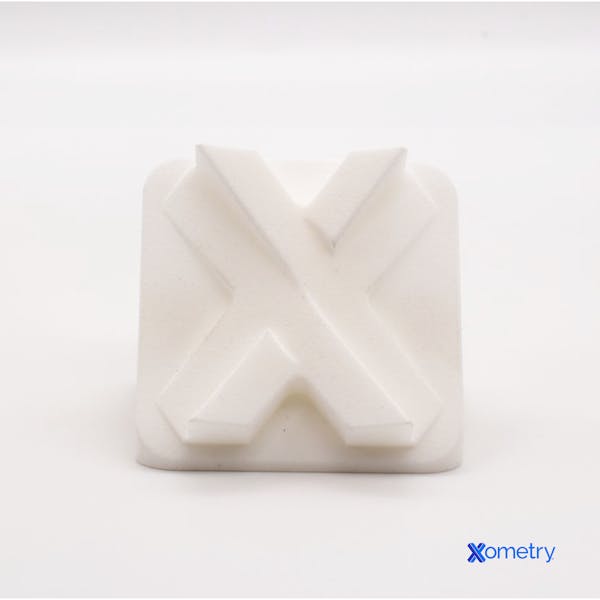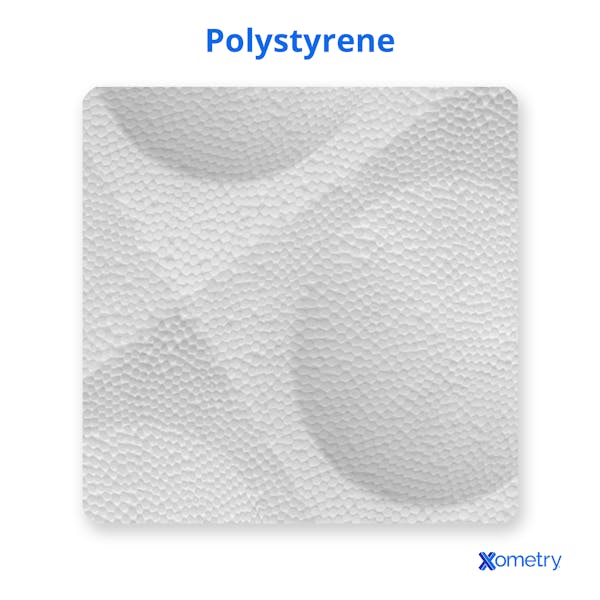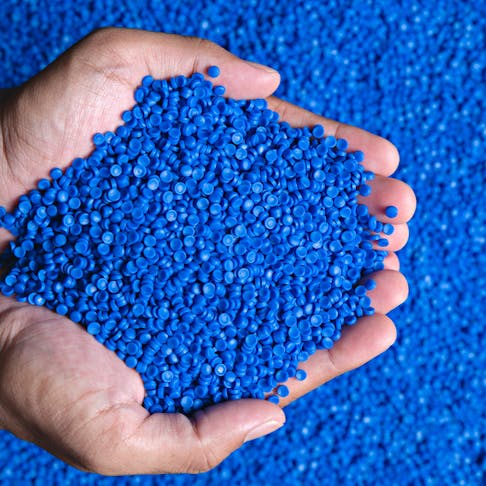What Is a Polymer?
A polymer is a class of natural and synthetic substances composed of very large molecules. Natural polymers are the major building blocks of living organisms, including proteins/polyamides, polynucleotides (RNA, DNA), and lignins (coniferyl alcohol compounds). Various natural and man-made minerals also qualify as polymers. These include diamond, quartz, concrete, and silicone rubbers. Man-made polymers are a broad collection of diverse chemistries/monomers that are induced to catalyze by various means. These result in polymers as diverse as LSR (liquid silicone rubber) and LCP (liquid crystal polymer).
Polymers are also called plastics. This term derives from the highly plastic behavior of some of the earliest materials such as polyethylene, which can undergo very large plastic deformations under load before a fracture occurs. Polymers are also often referred to as resins (or synthetic resins) because of the natural tree resin origins of some of the (primitive) natural polymer materials used for thousands of years.
Polymers are made of repeating steps of simpler compounds called monomers. Many chemicals have the potential to be polymerized into chains that make a material whose properties differ extremely from the monomer—these are polymers. Monomers can be organic chemical gases, oily liquids, amino acids, sugars, alcohols, and many more chemical types.
Properties of Polymers
Discussed below are the mechanical, chemical, optical, and electrical properties of polymers:
Mechanical Properties of Polymers
- Polymers have the ability to stretch and deform under load and recover unaltered when the load is removed. Most polymers show some elastic behavior; some are extremely elastic.
- Polymers have the ability to permanently or viscously stretch and deform under load. Some polymers are crystalline and brittle, however.
- Polymers cover a spectrum of strengths from almost liquid to near-light-metal strengths. Natural polymers generally have low strength, when compared with synthetic resins.
Chemical Properties of Polymers
- Many polymers are highly durable molecules that are resistant to many or all forms of natural, environmental, and chemical degradation. Others, particularly natural polymers, are extremely delicate and fragile. Many polymers are susceptible to organic acids, triggering depolymerization and breakdown. Other polymers are highly soluble in organic solvents such as chloroform, acetone, alcohols, etc.
- Most synthetic polymers are hydrophobic to some degree, although some are soluble in water, which can be a useful property. Many natural polymers are hydrophilic and affected by water, though rarely fully soluble.
Optical Properties of Polymers
- Polymers range from highly amorphous to highly crystalline.
- Crystalline polymers are generally opaque at optical frequencies.
- Amorphous polymers are often transparent at visible light frequencies. Transparency in amorphous polymers varies from cloudy/colored translucency to glass-like transparency.
- Biaxial stretching can induce transparency in various polymers that are not naturally transparent.
Electrical Properties of Polymers
Almost no polymers are naturally conductive. Many are highly effective dielectrics that are widely used in the electricity and electronics sectors for isolators and insulators. High breakdown voltages predominate in polymers. A few polymers have shown unusual electrical properties including poly(vinylidene fluoride-hexafluoropropylene) (P(VDF-HFP)), polyacetylene (PA), polyaniline (PANI), and polypyrrole (PPy).
Types of Polymers
Polymers generally fall into large families, with some exceptions that are isolated chemically and unrelated to any of the families. The general types of polymers are natural polymers and synthetic polymers.
Natural Polymers
Natural polymers vary significantly by source. In their natural state, there can be many variants within a nomenclature that are closely related but can be differentiated by small properties and chemical identifiers. Some of the natural polymers are listed below:
1. Cellulose in Paper and Trees
Cellulose in the cell walls of fibrous growth is a toughening/stiffening agent that gives cells bulk and allows them to contribute to building tall and strong structures in plants. Various types of cellulose are differentiated by the plant source. Once extracted and refined, the raw material loses much of its variety and can be treated as a uniform material.
2. Starches in Plants Such As Potatoes and Maize
Starches are abundant biopolymeric materials. They are used in plants to store energy in a water-stable form, consisting of α-glucose polymers. Natural starches show poor strength and thermal stability. When extracted and purified, starches can be used as organic feedstock to manufacture bio-sourced polymers such as polylactic acid (PLA). They can also be used as feedstock for industrial alcohol production, which can then be used in the manufacture of alcohol-based polymers such as polyvinyl alcohol, and PVA.
3. Proteins, Such As Hair, Nails, Tortoiseshell
The protein from hair/shell, etc. is generally keratin. This can be dissolved by a variety of methods, to make feedstock for bio-sourced polymers, often including cellulose as a modifier. Large source keratin materials have long been used as-is as viable materials for product making: tortoiseshells and horns for combs, spectacle frames (horn rims), and decorative objects. Cow horns were traditionally used for waterproof storage (gunpowder) and as drinking vessels.
4. Wool From Animals
Wools are an excellent source of high-quality keratin. They are used as feedstock for several biosource polymers such as keratin dialysate and photoactive keratin films (combined with methylene blue) and are being used in medical applications.
5. Pitch or Tar
Pitch/tar/asphalt/bitumen is a family of viscoelastic materials. They are both natural and synthetic, are thermoplastic polymers, and have wide applications.
6. Natural Rubber and Lacquer
Natural rubbers are derived from the sap of a range of plants and exist as a method for carrying nutrients and fluids in the plant. They have another valuable property which is their hardening when exposed to air. They form a natural and waterproof/infection-proof barrier when the plant is injured. It is in this state that the natural monomer forms a natural polymer: latex.
Latex is exploited in various forms to make rubber compounds to promote aggressive cross-linking and greater chemical stability. Lacquers such as shellac are derived from the excretion of beetles. They can be dissolved in various solvents to make them applicable as coatings. As the solvent evaporates, the lacquer hardens.
Synthetic Polymers
Synthetic polymers are materials that are engineered for particular properties and industrially polymerized, from synthesized and natural monomers. The polymerizations can require high pressures and temperatures, catalysts, energetic reactions, and large industrial plants in many cases. Listed below are some examples of synthetic polymers:
1. Nylon
Nylons vary in the manufacturing method, molecular weight, and precise monomer class but they are all polymer chains constructed from polyamides. They are tough and chemically resilient engineering polymers with relatively poor cosmetics and a slippery, low-energy surface. Most nylon is manufactured as fibers for clothing, ropes, and webbing.

2. Polyethylene
Polyethylenes, like the nylons, are differentiated by molecular weight. The differences are generally related to the degree and complexity of side branching in the chains. The monomer is solely ethylene gas. Polythenes range from soft low density (plastic bag) material to UHMW (ultra-high molecular weight) engineering grades. Polythene is used for food containers, pipes, and engineering parts. For more information, see our guide on Polyethylene.
3. Polyester
Polyesters are generally amorphous materials, used as fibers and films. These are among the most widely used synthetic polymers. For more information, see our guide on Polyester.
4. Teflon™
PTFE, polytetrafluoroethylene is an advanced synthetic polymer based on fluorines and is representative of a larger family of related polymers. These materials have very low surface energy, making them ideal for applications where chemical and abrasion resistance are critical.
5. Epoxy
Epoxy resins are generally two-part materials that either co-polymerize when mixed, or undergo a catalytic reaction triggered by one part upon the other. Epoxies are thermoset polymers that are self-catalyzing and formed/applied as liquids that harden and hold their shape as firm (usually hard) solids.
6. Silicone
Silicone rubbers are mostly made as two-part, thermoset polymers that undergo a catalytic reaction when mixed. The resultant materials are generally elastomers, with low to moderate tear resilience but high compressive strength. They’re capable of withstanding high temperatures—up to 300 °C in some cases. For more information, see our guide on Silicone.
7. Slime
Slime is an unusual material that uses borax as a cross-linking agent. It transforms PVA (polyvinyl acetate) into a stable and super elastic material that behaves as both a fluid and a solid. When mixed with glue, borate activator ions cross-link with the glue’s protein molecules, turning them into larger molecules that find it more difficult to slide past each other. You have now made a new polymer. This makes slime very sensitive to strain rate. It allows the display of brittle behavior, despite being almost a liquid.
8. Polystyrene
Polystyrene (PS) is a very widely used polymer with very useful properties. It can be foamed (with a refrigerant gas) to make a soft, fragile but highly shock-resilient and insulating material (expanded PS). It can be used without copolymerization as a low-cost, somewhat brittle transparent solid. And it can be alloyed with synthetic rubbers (acrylonitrile and butadiene) to make an opaque, rigid, and strong polymer, ABS, with a near-universal application. For more information, see our guide on Polystyrene.

Applications of Polymers
The applications of polymers are listed below:
1. Clothing
Polymers are widely used in synthetic fiber manufacture for textiles, for diverse uses. Examples of polymers used in clothing are: nylon, aramid, polyester (PET), and PVA.
2. Money
Various countries have moved away from paper currency and now manufacture money from polymer films, generally polypropylene. This is a growing trend as it makes currency that serves for longer, stays cleaner, and isn’t implicated in contamination and poisonings.
3. Personal Protective Equipment
Disposable smocks, shoe covers, and coveralls are generally made from non-woven polypropylene fabrics. Disposable gloves are made from latex or nitrile rubber. Filter masks are made from a wide range of polymer fibers and non-woven polymer fabrics. Face shields are generally made from assorted polymers, with the transparent part being PET.
4. Medical Applications
The medical applications for polymers are wide-ranging. Examples are natural polymers for drug delivery systems, bioinert synthetic polymers for stents, and single-use devices for blood collection/diagnostics.
5. Household Items
Polymers of various types are widely used in the typical developed-world home. Examples are polyethylene food containers, ABS knife handles, films for food covering, and heat-resistant seals for oven doors.
6. Car Parts
The automotive sector uses polymers in most areas. Some examples are brake reservoirs, suspension bladders, door handles, and bumpers.
7. Packaging and Containers
Various synthetic polymers are widely used in packaging as rigid and film materials. Examples are: PET, PP, PS, and paper (cellulose).
8. Electronics
Large numbers of polymers serve a range of purposes in electronics. These include dielectrics, component enclosures, coatings, circuit boards, wire insulators, and structural parts.
The Advantages and Disadvantages of Using Polymers for Parts
The advantages of polymers are listed below:
- Easy and well-understood processing methods.
- Generally low cost of materials.
- Potential for high strength.
- High elasticity.
- Chemical stability.
- Thermal stability.
- Great cosmetic quality.
The disadvantages of polymers are:
- Low tensile strength.
- Ductility and plasticity under load.
- Thermal sensitivity.
- Chemical sensitivity.
- Poor abrasion resilience.
- Environmental burden.
Xometry provides a wide range of manufacturing capabilities including CNC machining, 3D printing of polymers, injection molding, laser cutting, and sheet metal fabrication. Get your instant quote today.
Copyright and Trademark Notices
- Teflon™ is a registered trademark and a brand name (Teflon®) owned by Chemours (formally DuPont)
Disclaimer
The content appearing on this webpage is for informational purposes only. Xometry makes no representation or warranty of any kind, be it expressed or implied, as to the accuracy, completeness, or validity of the information. Any performance parameters, geometric tolerances, specific design features, quality and types of materials, or processes should not be inferred to represent what will be delivered by third-party suppliers or manufacturers through Xometry’s network. Buyers seeking quotes for parts are responsible for defining the specific requirements for those parts. Please refer to our terms and conditions for more information.

